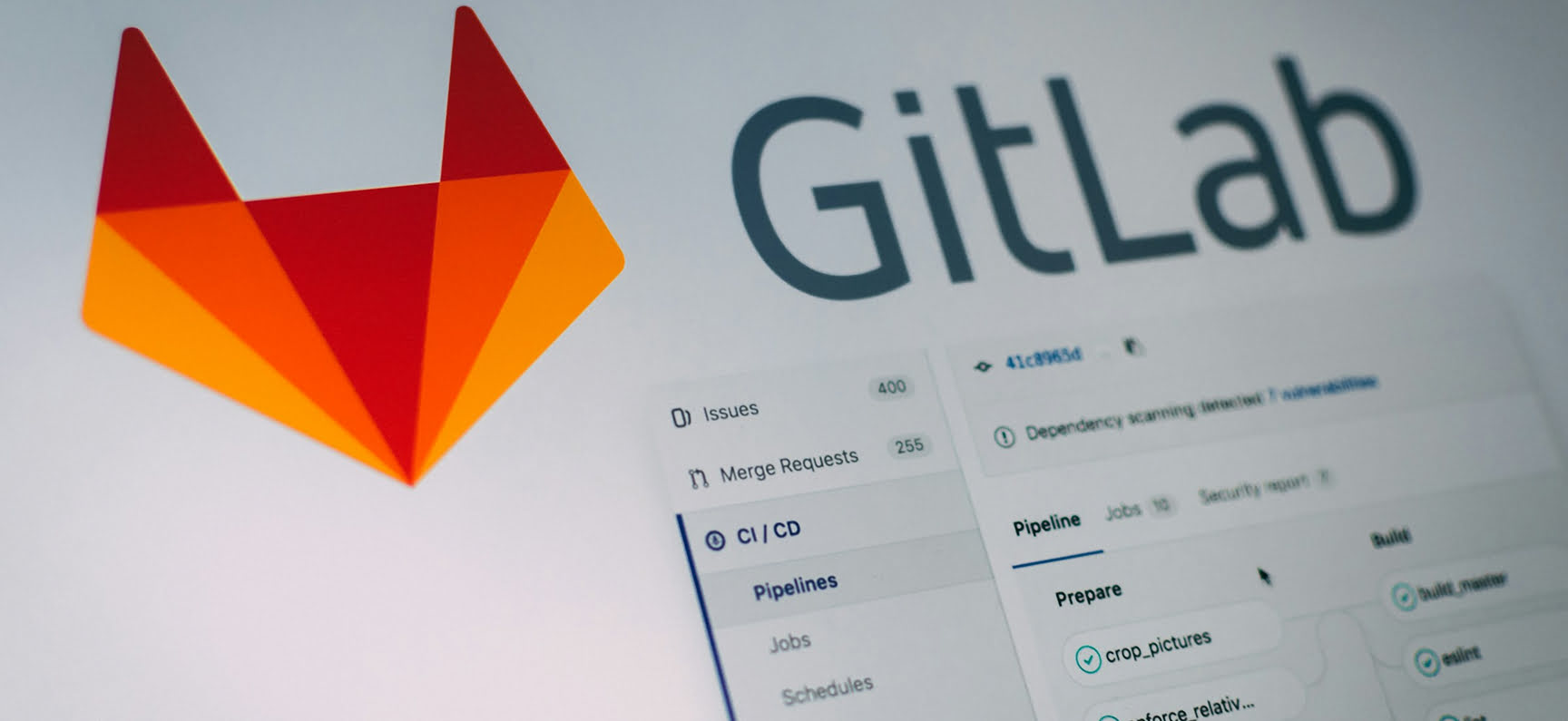In today’s high-stakes development world, slow releases aren’t just a bottleneck – they’re a business risk. That’s where CI/CD with Kubernetes comes into play. If you want to deploy faster, scale smarter, and catch bugs before they hit production, you need automation built for container-native environments.
This guide breaks down the best Kubernetes CI/CD tools for developers who are serious about speed, reliability, and clean delivery pipelines. Whether you're running microservices at scale or just starting your DevOps journey, these tools will help you build, test, and ship code like a pro – no drama, no delays. Let’s dive in.
What Is CI/CD with Kubernetes?
CI/CD with Kubernetes is the engine that powers modern DevOps. CI (Continuous Integration) ensures that your code changes are automatically tested and merged, while CD (Continuous Delivery or Deployment) automates the rollout process into your Kubernetes clusters. It’s all about creating a repeatable, reliable pipeline where your developers can push code faster – and with fewer surprises. When paired with container orchestration, CI/CD becomes even more powerful. Kubernetes enables microservices to scale and self-heal, and CI/CD ensures those services are delivered quickly, safely, and continuously.
Expert Opinion «Modern development pipelines demand more than just automation – they need clarity, reliability, and speed. At Artjoker, we help companies implement Kubernetes-native delivery systems that scale with their teams, not against them. The right tool doesn’t just ship code faster – it brings structure to chaos and turns infrastructure into a competitive advantage.»Oleksandr Prokopiev Chief Executive Officer, Artjoker
Why CI/CD Is Crucial for Kubernetes Workflows
Kubernetes is dynamic by nature – but without the right tooling, that power can create chaos. That’s why CI/CD tools for Kubernetes aren’t optional – they’re essential. You need a pipeline that can:
- Handle rolling deployments and canary releases.
- Automatically update manifests and configurations.
- Integrate with Helm, Kustomize, or other K8s-specific deployment strategies.
Choosing the best CI/CD for Kubernetes isn’t just about automation – it's about controlling the chaos that comes with managing containers at scale.
Key Benefits of Implementing CI/CD in Kubernetes Environments
Why are so many teams investing in CI/CD pipeline tools for Kubernetes? Because they get results:
- Speed: Faster, automated deployments mean more features delivered with less wait time.
- Stability: Built-in testing ensures broken code doesn’t go live.
- Scalability: Seamless deployments across dev, staging, and prod environments.
- Security: Integrate security scans and policies directly into the pipeline.
The best CI/CD tools for Kubernetes give your team superpowers: from smoother workflows to tighter feedback loops. If you're on the hunt for the best CI/CD tool for Kubernetes in 2025, it’s not just about flashy features – it’s about who can help you deliver with confidence.
Looking for an expert roundup? Check out our best CI/CD tools and best DevOps tools to see how they compare.
Criteria for Choosing the Best CI/CD Tools for Kubernetes
When it comes to Kubernetes development, not all CI/CD tools are created equal. Here’s what to look for when choosing the right one for your team:
- Native Kubernetes integration – The tool should speak fluent K8s, supporting manifests, Helm, Kustomize, etc.
- Scalability – Can it handle large pipelines and multiple microservices?
- GitOps compatibility – Git-driven workflows are becoming the norm in DevOps services.
- Customizability – Does it allow you to tweak workflows for your team’s unique setup?
- Security & compliance – Built-in scanning and role-based access control are must-haves.
- Ease of onboarding – Especially critical for fast-moving teams doing CI/CD development.
- Strong community or enterprise support – You’ll want docs, forums, or vendor backing when things go sideways.
- Support for Kubernetes best practices – The right tool should help enforce structure, not create technical debt.

Best Kubernetes CI/CD Tools
Ready to explore the top players? These are the best CI/CD tools purpose-built (or perfectly adapted) for Kubernetes workflows. Whether you're scaling a startup or fine-tuning enterprise-grade development, these tools can make or break your deployment game.
Argo CD (Kubernetes-native, GitOps-focused)
Argo CD is a rockstar for GitOps-first teams. Built specifically for Kubernetes, it keeps your deployments in sync with Git and makes rollbacks as easy as clicking a button. Great for teams who want Kubernetes-native control with minimal overhead.
- Perfect fit for teams practicing Kubernetes practices
- Real-time diffing between live and declared state
- Supports Helm, Kustomize, and Jsonnet out of the box
Tekton Pipelines (Customizable and Kubernetes-native CI/CD)
Tekton is the foundation for many other tools and offers raw power and flexibility for building custom CI/CD pipelines in a Kubernetes environment. It's less plug-and-play, but if you're looking to fine-tune every step, Tekton’s your framework.
- Ideal for developers deep into CI development
- Kubernetes-native CRDs
- Supports cloud-native build automation and reuse of pipeline tasks
Jenkins X (CI/CD for Kubernetes with automation)
Jenkins X isn’t just a Kubernetes version of Jenkins – it’s a complete reimagining, designed to work with GitOps, preview environments, and automated deployments from the ground up.
- Combines classic Jenkins reliability with Kubernetes agility
- Auto-environments for staging and PRs
- Tailored for microservices and DevOps development services
GitLab CI/CD (All-in-one DevOps platform)
For teams that want everything in one place – code, pipelines, issues, security – GitLab CI/CD delivers. With built-in Kubernetes integration, it handles everything from code review to deployment in a single UI.
- Native integration with Kubernetes clusters
- Strong GitOps support
- Excellent for companies scaling development alongside team collaboration
CircleCI (with Kubernetes integration)
CircleCI brings speed and simplicity to CI/CD, with powerful Kubernetes support and smart caching. It’s great for agile teams who want to move fast without building from scratch.
- Easy to integrate into modern stacks
- Fast pipelines, auto-scaling runners
- Works well for container-based CI development
Comparison Table: Best CI/CD Tools for Kubernetes
| Tool | Strengths | Best For | Complexity Level |
|---|---|---|---|
| Argo CD | Git-first approach, native integration, real-time sync | Teams practicing GitOps and declarative workflows | Low to Medium |
| Tekton | Modular design, full customization, built on Kubernetes CRDs | Advanced users building pipelines from scratch | High |
| Jenkins X | Automated environments, preview deployments, built-in GitOps | Fast-moving teams needing smart automation | Medium to High |
| GitLab | All-in-one platform, strong collaboration features, auto-scaling runners | Teams needing a full dev cycle platform | Medium |
| CircleCI | Speedy builds, Kubernetes-friendly, optimized caching | Startups and dev teams focused on delivery speed | Low |
Checklist: How to Choose the Best CI/CD Tool for Your Kubernetes Pipeline
- Define your team’s workflow. Do you prefer push-based or pull-based updates? Declarative or scripted?
- Consider your experience level. Some platforms require more setup and customization than others.
- Check for native compatibility. Look for tools that speak Kubernetes natively (not through plugins).
- Evaluate integration needs. Will it need to hook into Git, security scanners, or monitoring tools?
- Assess automation capabilities. Does it handle testing, rollout, and rollback with minimal effort?
- Prioritize visibility. A good dashboard saves hours when debugging or tracking progress.
- Look at scalability. Will the platform grow with your microservices or multi-cluster setup?
- Review community and support. Open-source? Enterprise support? Consider what happens when things go sideways.
- Think about team collaboration. Is it easy for devs, QA, and ops to work together in one place?
- Don’t forget maintenance. Who will own updates, upgrades, and pipeline evolution long term?
Case Study: Fintech Infrastructure Reimagined
If you're looking for a fintech cloud transformation done right, the CryptoPlatform project is a standout example. Since September 2022, Artjoker has worked with this Germany-based crypto exchange to overhaul their infrastructure and deployment strategy from the ground up.
Here’s how we made it happen:
- Infrastructure as Code (IaC): Using Terraform, we codified their entire AWS environment – from VPCs and IAM roles to serverless components – ensuring the setup was consistent, version-controlled, and easy to replicate.
- Automated Delivery Pipelines: With GitLab CI/CD and AWS Lambda at the core, we created streamlined deployment workflows that were fast, stable, and built to scale. It's a prime example of how we apply our AWS DevOps services in high-demand industries.
- Toolset: The stack included Docker, AWS, Ansible, Terraform, GitLab CI/CD, SonarQube, and Serverless Framework – tools chosen to maximize automation, enforce quality, and lock in security.
The impact?
- 320% increase in performance throughput
- 50x faster deployments
- Stronger security through automated, auditable configurations
- Seamless scalability under peak loads
CryptoPlatform’s success is a clear example of what happens when fintech companies team up with a provider who truly understands automation, compliance, and modern infrastructure needs. If you're ready to get the same level of speed, security, and scalability – Artjoker is the partner to make it happen.
Why Choose Artjoker for Kubernetes-Driven DevOps Solutions?
When it comes to building modern infrastructure pipelines, you don’t just need tools – you need a partner who understands how to bring it all together. At Artjoker, we don’t offer cookie-cutter solutions. We architect systems that are tailor-made to your workflow, business goals, and scaling needs.
Here’s what sets us apart:
- Kubernetes expertise baked in: From designing containerized architectures to implementing GitOps workflows and automation best practices, we live and breathe Kubernetes development.
- End-to-end delivery: Whether you're just starting with DevOps or looking to optimize an existing pipeline, we handle it all – from initial audit to full-scale implementation.
- Fast, adaptive, and transparent: Our team moves fast, adapts to shifting priorities, and keeps you in the loop at every step. No black-box handoffs – just clear collaboration.
- Results you can count on: We don’t just deliver tools – we deliver outcomes. More stability. Faster releases. Less stress on your engineers.
Expert Opinion «Our overall experience was good. In most cases, we received the deliverables on time, except for some rare situations when we experienced a delay of more than a week after the deadlines (which is pretty common in IT/software development). Communication was prompt, and the management and other team members responded quickly and directly to the point, helping us identify and estimate our needs.»Rasim Nadzhafov Chief Product & Technology Officer, TEN.gg
What is the best CI/CD tool for Kubernetes GitOps workflows?
If you're leaning toward a Git-first approach where everything is declarative and version-controlled, Argo CD is a standout. It's designed from the ground up for GitOps workflows, offering seamless syncing between your code and your runtime environment.
Can I use GitHub Actions as a CI/CD solution for Kubernetes?
Absolutely. While GitHub Actions wasn’t built specifically for Kubernetes, its flexibility allows it to trigger deployments, run tests, and manage containers with the right configuration. You’ll just need to integrate tools like kubectl, Helm, or Kustomize into your workflow.
Which CI/CD tool is easiest to set up for Kubernetes beginners?
CircleCI is often praised for its simplicity and quick setup. It offers pre-configured integrations and a clean interface, making it easier for beginners to get up and running without heavy scripting or complex environments.
How do I integrate my CI/CD pipeline with a Kubernetes cluster?
You’ll typically start by generating access credentials for your cluster – this might be a kubeconfig file or token. Most platforms allow you to securely store and reference these credentials. Then, using scripts or declarative configs, you define how workloads are applied, rolled back, or updated based on changes.
Is there a fully managed CI/CD service optimized for Kubernetes?
Yes, several platforms offer managed services that handle the heavy lifting for you. Argo CD (with cloud-hosted options), Jenkins X, and GitLab’s SaaS version all provide streamlined experiences where infrastructure and scaling are handled behind the scenes – perfect for teams that want power without managing everything manually.
Conclusion
There’s no silver bullet – just the right fit for your needs. Some teams want ultimate control and choose something fully customizable. Others want fast results with minimal maintenance. The best solution is the one that fits your project scale, your team’s skill level, and how fast you want to move.
Choosing the right setup is about balance. Pick the one that supports your workflow, your growth, and your vision for delivery. Want help deciding or implementing the best-fit tool? Let’s talk – Artjoker’s experts are here to help you build smarter, faster, and with confidence.
Similar articles
View allyour business
together
- PROJECT INQUIRIES info@artjoker.net
- CALL US +1 213 423 05 84
contact us:













